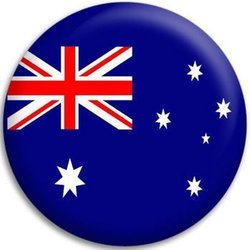June’s Australian economic outlook improved, with the country’s Leading Economic Index rising by 0.4% and its Coincident Economic Index increasing by 0.2%, says The Conference Board.
A country’s Leading Economic Index (LEI) predicts future economic activity, a rising number indicates that the future is improving.
The Coincident Economic Index (CEI) shows the current state of the economy. Analysts, investors and economists use the CEI to determine at what point in the economic cycle a nation is.
Australian LEI
Of the seven components that make up Australia’s LEI, six contributed positively to June’s result.
Below is a list of the 7 LEI components in order of the size of their contributions (the largest positive contributor first):
- sales to inventories ratio (positive),
- the yield spread (positive),
- rural goods exports (positive),
- building approvals (positive),
- money supplies (positive),
- gross operating surplus (positive),
- share prices (negative).
After increasing by 0.4% in June, Australia’s Leading Economic Index currently stands at 130.2 (2004 = 100), after falling 0.1% in April and rising 0.2% in May.
During the first six months of 2014 the LEI increased by 1.5%, with five of the seven components contributing positively.
(Data source: The Conference Board)
Australian CEI
Of the four components that make up Australia’s CEI, three contributed positively.
Below is a list of the four components and how they contributed to June’s figure:
- household gross disposable income (positive),
- employed persons (positive),
- industrial production (positive),
- retail trade (negative).
After June’s 0.2% rise, Australia’s CEI currently stands at 125.2 (2004 = 100), following a 0.1 increase in April and no change in May.
During the first half of this year, Australia’s CEI rose 1.3%, with all the four components contributing positively.
According to The Conference Board:
“Taken together, the recent behavior of the composite indexes suggests that economic expansion is not likely to accelerate in the near term.”
(Data source: The Conference Board)
More than just low interest rates needed
The Reserve Bank of Australia (RBA) says the outlook for the country’s economy is uncertain and the strong Australian dollar remains a key problem.
RBA Governor, Glenn Stevens, says that lower interest rates are not the answer to diminishing confidence and poor growth.
He told the House Economic Committee in Brisbane that the Australian government budget was neither “that tough” nor “draconian”. He added that the country’s economic growth is being undermined by declining consumer confidence and the expected downturn in resource investment.
Mr Stevens said:
“We as a community have decided to do costly and good things but we haven’t taken the decisions to secure the funding.”
After appearing to reject a lowering of interest rates, the Australian dollar rose to US$93.1 cents.
On being asked by lawmakers what could be done to stem rising unemployment, Mr. Stevens said:
“I don’t think interest rates are the answer at the moment. The thing that is most needed now is something monetary policy can’t directly cause: more of the sort of ‘animal spirits’ needed to support an expansion of the stock of existing assets (outside the mining sector), not just a repricing of existing assets.”
While acknowledging that the current 6.4% unemployment rate was “clearly weak”, he pointed out that negative real wage growth was helping prevent rapidly rising joblessness.



